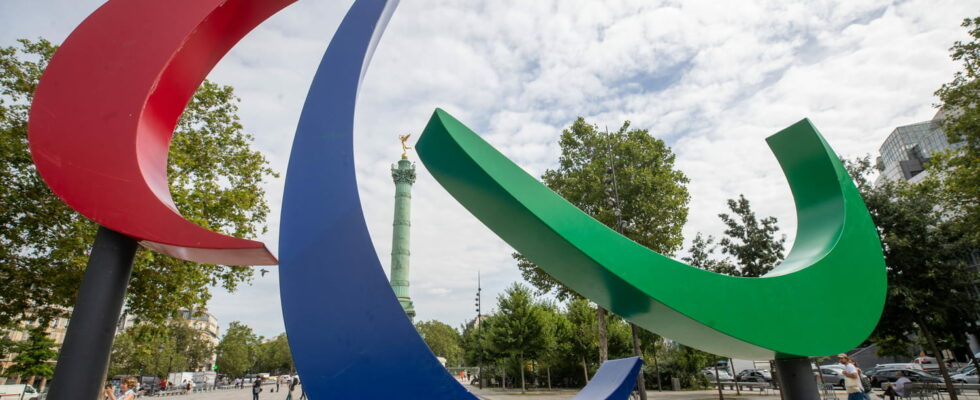After the Olympic rings, do you know the Agitos? These three colored commas (red, blue and green) are the symbol of the Paralympic Games.
The Paris 2024 Olympic Games are giving way to the Paralympic Games, which will open on August 28, where everyone is hoping for the same level of excitement as for the Olympic Games. For two weeks, the Paralympic Games ticketing website has been heating up more than usual. If the organizers had announced in June that the milestone of one million tickets sold had been reached, this figure would now be around 1.2 million. “We have sold more than half of the tickets,” said the president of the Paris 2024 Organizing Committee, Tony Estanguet, on Monday, August 12 on France Inter. A competition that arouses curiosity, starting with that of the symbol which is not the same as for the Olympic Games.
A bit of history
It took a while to create and find the right logo. The very first one for the Paralympic Games, in 1960, was three wheels… In reference to wheelchairs because the Paralympic Games were only allowed for people in wheelchairs. Many, many logos have followed one another. A man in a wheelchair shooting an archery for the Paralympic competition in Germany was the symbol in 1972, three rings under a character with his arms in the air for Canada in 1976 and a flame, on which we read USA, for New York 1984.
South Korea, the precursor to the current logo
In 1988, South Korea proposed a logo that was similar to the one that would be seen all over Paris. It featured five commas, in the same colors and arranged in the same way as the rings. These were “Taegeuks”, which came from the two nested shapes found on the South Korean flag. From 1994 to 2004, this logo would be used before the committee requested a change because it was too close to the Olympics.

So it was in 2004 that the new logo was put in place with commas called “agitos”, a Latin term meaning “I move”. They represent the global Paralympic movement and in this case the Paralympic Games which will take place over two weeks. They are shaped like asymmetrical crescents in red, blue and green. Each agito symbolizes movement, they represent the will to never give up, the inspiration and passion that drive para-athletes. This logo was slightly modified in 2019.
Installed on the Arc de Triomphe
Like the Olympic rings installed on the Eiffel Tower, another symbolic place in the capital was chosen to hang these agitos. The Arc de Triomphe was not chosen by chance, at the top of the Champs-Elysées while the opening ceremony of the Paralympics is to be held at the bottom of the Avenue and the Place de la Concorde on August 28. During the last editions of the Olympic Games, Paralympic agitos had been installed at iconic locations in the host cities: Tower Bridge in London in 2012, Copacabana Beach in Rio in 2016, Tokyo Bay in 2021. The agitos will remain hung until the end of the Paralympic Games on September 8.
